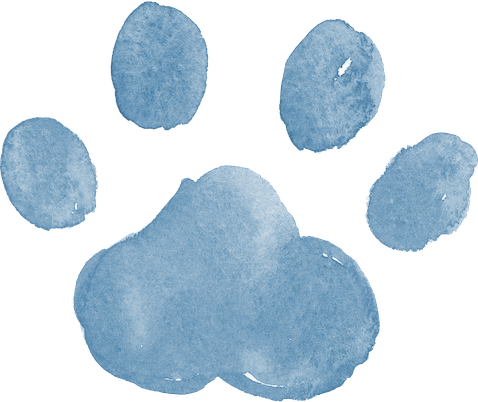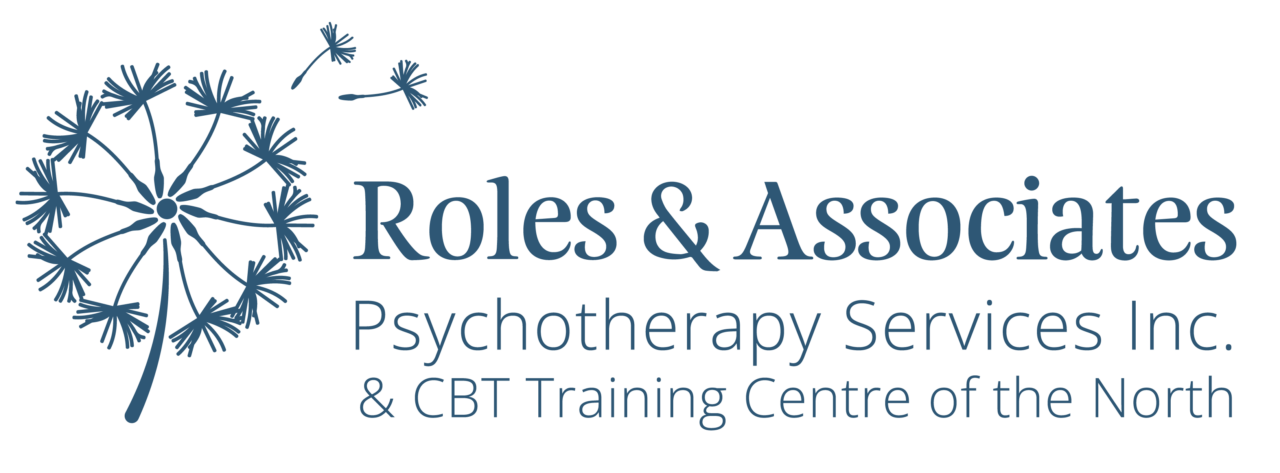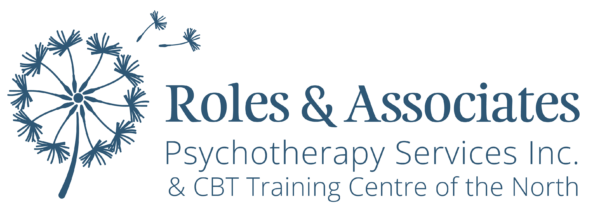What is Depression?
Depression is a common medical illness that negatively affects how you feel, how you act and the way you think. It can make everything seem to be coloured with a grey lens and is often associated with a sense of hopelessness and despair. Life’s difficulties can often lead to depressive episodes and it can feel like it will never end.
Depression is a mood disorder that is marked by symptoms including:
- low mood;
- low energy;
- changes in eating;
- suicidal thoughts;
- changes in sleeping;
- ruminating thoughts (repetitive negative thoughts);
- reduced interest in activities once enjoyed;
- lack of attention and concentration;
- and/or somatic complaints such as sore muscles, headaches, and stomach aches.
These symptoms must be present for a minimum of two weeks to be identified as depression.
There are multiple types of depression:
- Major depression is an episode lasting two weeks, marked by the symptoms listed above, and it is significant enough to impact one's ability to carry out normal tasks of daily living like caring for children, attending work or school, etc.
- Dysthymia, also called persistent depressive disorder, has more mild symptoms that span a minimum of two years.
- Antenatal or perinatal depression can affect people during pregnancy and after they have given birth, as well as a portion of partners who have not given birth but are responsible for caring for the child.
- Seasonal affective disorder (SAD) is depression marked by the change of the season and is common in colder regions with harsher winters. This type of depression generally starts in the fall as the days become shorter, with symptoms lessening or disappearing in the spring and summer.
- People with bipolar disorder also experience bouts of depression (low activity) mixed with periods of mania (high activity) which can look like increased energy, creativity, and/or irritability, and impulsiveness.
- Additionally, there are other types of depressive disorders including disruptive mood dysregulation disorder, more common in youth, and premenstrual dysphoric disorder, which relates to depressive symptoms in a person’s menstrual cycle that are more intense and distressing than regular premenstrual symptoms and alleviate on their own at the end of the cycle.
What is Grief?
Grief can be a very normal reaction following a significant loss, death of a loved one, or a traumatic event. In other cases, depression can become chronic and recurrent, which can cause hopelessness and grief in and of itself. Grief is sorrow and distress that feels overwhelming and all-encompassing.
Symptoms of grief mimic symptoms of depression, however unlike longer-lasting depression, grief is a normal reaction and can be a healthy way to cope with loss. It is important to note that all change involves loss, so it is not strictly reserved for death and bereavement. Changes to your home life, job, schooling, or relationships can all trigger grief, and we are here to help you process and make space for your grief.
Grief can and will look different for each person, with common symptoms including:
- memory loss;
- changes in mood & appetite;
- energy levels;
- extreme sadness and hopelessness.
Attempting to avoid grief can result in longer-standing mental health challenges or depression, so reaching out early is key to being successful in moving through feelings associated with grief.

Pet Bereavement
Are you struggling with the loss of your pet? Know that you are not alone.
Every year, millions of households deal with the loss of their pet. This loss is often accompanied by intense feelings of grief and sorrow, as for many of us, this means the loss of one of our best friends or beloved family members. The relationship we have with our pets is unique, as our pets offer us an intense source of comfort, companionship, unconditional love, and joy that is truly irreplaceable. In fact, studies have shown that our bond with our pets may be comparable to or even surpass, our bond with other humans. Our pets also become a significant and constant part of our lives, which can make adjusting to life without our pet extremely difficult.
Contrary to what we might expect, grief does not typically unfold in a linear fashion, nor does it have a set timeline. Our experiences of grief depend on a variety of factors, including our personality and upbringing, the relationship we held with our pet, the circumstances of death, as well as our cultural and spiritual beliefs. The way grief affects us physically, emotionally, cognitively, socially, and spiritually will also vary from person to person.
Common grief symptoms following the loss of a pet include:
- Crying
- Guilt
- Depression
- Pain
- Anger and irritability
- Loss of appetite
- Sense of loneliness
- Preoccupation with memories
- Numbness
- Disbelief
- Searching for the lost pet
- Avoidance or memories, thoughts or places reminding us of the pet
Disenfranchised grief describes grief that is not socially acknowledged, mourned, and supported by others. While grief over the loss of another person is generally accepted as normal and necessary, grief over the loss of a pet in our society is sometimes viewed as less than and can be left unacknowledged. We often hear comments such as “you can always get another one” or “he was just a dog,” which may contribute to the stigma behind pet bereavement. It has therefore been suggested that pet bereavement is a common type of disenfranchised grief.
Disenfranchised grief is often experienced by those who have lost their beloved pets, as our support systems often fail to acknowledge or validate the profound depth, unconditional love, and longevity of our relationships with our pets. This can complicate the process of bereavement and intensify or prolong our negative emotional reactions.
An important step in managing your grief is to be reassured that grief reactions are normal and that they must run their course as grieving is a process. Be gentle with yourself as you navigate life without your beloved pet, as it may take time to adjust to life without them by your side.
In order to deal with your grief effectively, it is important to take time to work through your emotions rather than trying to push them away or avoid them. It can be helpful to find support from people who will listen without judgment, to embrace the positive memories you have with your pet, and/or to memorialize your pet in some way. It is also important to continue to take care of yourself by remaining active and giving yourself breaks and distractions from the sadness.
Free Pet Bereavement Support Group
Roles and Associates Psychotherapy Services Inc. are offering a free pet bereavement support group on a monthly basis on the zoom virtual platform. Registration is required prior to attending. We can also be reached for individual psychotherapy appointments and are covered by many insurance companies.
Please contact Roles and Associates for more information.
Phone: 705-929-1612 (ext 6.)
Email: [email protected]

Approaches to Therapy Treating Depression & Grief
We use a variety of methods to help navigate these experiences of depression and grief. By combining helpful cognitive tools with healthy coping and behavioural activation, we support people to take small manageable steps to alleviate their specific symptoms and find joy and wellness despite this diagnosis.
Acceptance and commitment therapy (ACT) is an action-focused therapy approach where clients learn to accept their emotions and feelings rather than deny or avoid them. They also learn to accept their difficulties and needs as well as work on behavioural changes.
Brainspotting therapy™ (BSP) is a therapeutic process that uses specific points in the client’s visual field to access unprocessed trauma in the subcortical brain. BSP uses relevant eye positions, somatic awareness, focused mindfulness, and the therapist’s attunement to process and release the stored traumas which underlie a wide range of emotional and physical problems. It is a brain-body-based treatment that integrates well with other types of therapies. Often brainspotting is used in conjunction with bilateral sound - music or nature sounds that move back and forth between right and left ears, which balances activation of the right and left brain hemispheres and activates the parasympathetic, or calming, part of the nervous system. Brainspotting therapy was developed in 2003 by Dr. David Grand, an EMDR therapist and relational analyst.
Cognitive behavioural therapy (CBT) is a goal-oriented type of therapy that teaches the client how to first recognize and then change unhealthy ways of thinking and behaving. With the use of in-session practice and homework of skills to work on between sessions, this treatment is tailored to fit the client's goals and is a highly evidence-based collaborative psychotherapy.
Compassion focused therapy (CFT) is a type of psychotherapy that encourages individuals to be compassionate toward others as well as themselves. This type of therapy is primarily used for clients that struggle with self-criticism and self-contempt. CFT often includes exercises to practice mindfulness and appreciation. Sessions focus on examining the ways we talk to ourselves, where we might have first developed the particular tone and word choices used, and how we can make changes to how we speak to ourselves to increase self-compassion and appreciation.
Eye movement desensitization and reprocessing (EMDR) is another structured approach to treating PTSD, as well as trauma. Clients will briefly access a traumatic memory during sessions while being guided and supported by the therapist who will support them to keep them grounded. This type of therapy is ideal for clients who prefer not to verbalize their traumatic experiences, which is necessary for PE, but who still want to work on trauma memories and related symptoms.
It is the nature of the mind to be made up of subpersonalities or parts. Subpersonalities are aspects of our personality that interact internally, similar to the ways in which people interact. These sub-personalities can consist of wounded parts and painful emotions such as anger and shame. Underlying the parts is a person’s core or true Self. The Self can and should lead the individual's internal system.
Internal Family Systems (IFS) therapy helps individuals achieve balance and harmony within their internal system and subpersonalities/parts.
Using IFS, the clinician will support individuals in developing their Self so it can be an effective leader in their internal system. When the Self is in the lead, the parts will provide input to the Self and help to elevate “wounds” so that individuals can find their natural balance. IFS is suitable for individuals, couples, and families, and it can effectively treat a variety of conditions such as depression, anxiety, panic, phobias, trauma, substance use, physical health conditions, and general well-being.
Meaning therapy belongs to the humanistic-existential tradition, which emphasizes the importance of addressing existential anxieties and the human needs for meaning and authenticity. According to Frankl (1986) who developed logotherapy aka meaning therapy, three factors characterize human existence: spirituality, freedom, and responsibility. In meaning therapy we focus on the human responsibility to live meaningfully and purposefully in every situation on a daily basis in order to become what they are meant to be.
Psychodynamic psychotherapy is the oldest of the modern therapies and focuses on unconscious processes as they are manifested in the client's present behaviour.
The goals of psychodynamic therapy are client self-awareness and understanding of the influence of their past on their present behaviour. Brief psychodynamic psychotherapy enables the client to examine unresolved conflicts and symptoms that arise from past relationships and manifest themselves in their day to day life as current struggles.
Several different approaches to brief psychodynamic psychotherapy have evolved from psychoanalytic theory and have been used to treat many different mental health presentations.
As the name suggests, solution-focused brief therapy (SFBT) is a short-term goal-focused therapeutic approach largely geared towards discussing solutions. There is a brief need for discussion around the problem to examine what it is and explore potential opportunities to address it, but that is not the primary focus of this approach. This approach is rooted in the here and now, with an identified future-oriented goal involving lessening the negative impacts the identified problem has in your life.
The goal of SFBT is to collaboratively identify realistic solutions in as brief of a timeline as possible. SFBT is a versatile approach that can be used in areas such as individual, couples, or family therapy addressing anywhere from high stress life events to normal life stressors.
Contact Form
To request an appointment, please fill out your information using our secure form below and we will be in touch shortly. For more information, please contact us by phone or email: 705-929-1612 ext.6, [email protected].

